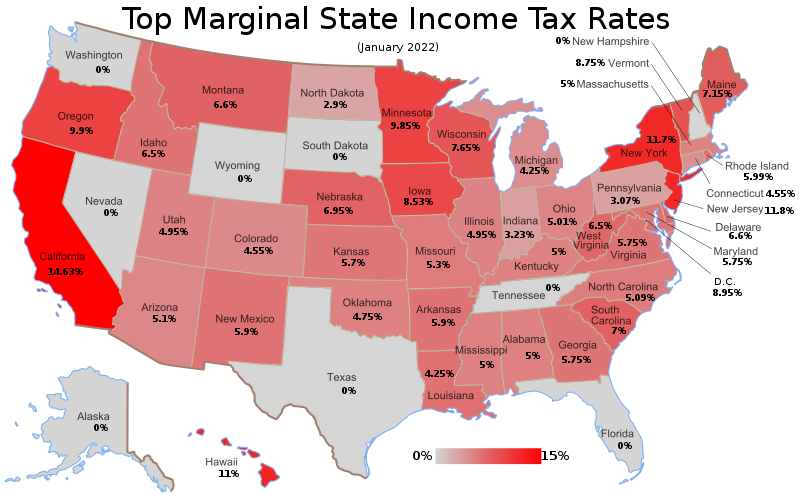Don Pesci: 'Tax relief' and 'tax cuts' on shifting sand
Egyptian peasants seized for non-payment of taxes several thousand years ago.
VERNON, Conn.
“The future ain’t what it used to be”
– Yogi Berra
The headline in a CTMirror story, “CT budget deal includes $600M in tax cuts, extends gas tax holiday”, includes a telling subtitle: “But more than half the tax relief is guaranteed for just one year.
There’s always a “but” in good journalism raining on someone’s parade.
The thrust of the story raises an interesting question: In what sense is “tax relief” a “tax cut”?
Many of the “tax cuts” referenced in this and other stories in Connecticut’s media are either temporary tax cuts or tax credits.
A temporary tax cut is only a “tax cut” until it elapses, after which it becomes once again a tax increase. And a “tax credit” is not, properly speaking, a tax cut. A tax, almost always permanent, moves money from a taxpayer’s budget to a state or federal treasury. A “tax cut” terminates the movement and leaves disposable assets in the account of the taxpayer.
A tax credit retains in public treasuries money moved from private to public accounts and surrenders a small part of the tax money collected to favored taxpayers.
From the point of view of the tax collector -- the state or federal government -- the beauty of a tax credit lies in the generally false appearance that those extending the credit are surrendering to preferred groups money that has been earned by state or federal government.
In moments of extreme clarity, everyone knows that a state government does not “earn” money of its own, as do private enterprises by producing and selling goods and services. States are tax collectors only, and the money they apportion belongs to tax payers who, through their own labor, earned their assets. Naturally, those surrendering money to state or federal government would like to believe political claims that the money collected would be used by government to increase the “public good.”
That is why the headline writer for CTMirror felt compelled to add to the story that clearly identifies what state Democrats and some media adepts consistently call “tax cuts” a subtitle that identifies the so called “tax cuts” as “tax relief.” A true tax cut eschews collection and leaves assets to be disposed of by a creative, enterprising and profit-seeking private marketplace. A tax credit reduces all three elements – minus a small bit of tax relief, usually temporary, apportioned for political purposes to groups favored by a reigning political party.
During election times, epistemological confusion – calling a tax credit or temporary suspension of a tax a “tax cut” – is everywhere, because give-backs and tax relief, however temporary, purchase votes, and the party in power is always interested in purchasing votes so that they may retain office and eventually raise the level of taxation to purchase vote and retain political power.
Connecticut’s temporary tax cuts and credits are built on shifting sand.
“The tax cuts,” a Hartford paper noted, “are possible because of a quickly growing state budget surplus and more than $2 billion in federal stimulus funds over 2 years that have helped fund numerous programs across the state.” The state’s budget surplus – i.e., the amount of money the state has overtaxed its citizens – is projected to reach $4 billion. And the federal stimulus funds aggravate inflation and possibly a pending recession. It takes Connecticut about 10 years to recover from a national recession.
It gets worse: The money that will finance more excessive spending is finite, and temporary, but the spending it purchases is mostly permanent and more costly than Connecticut taxpayers can afford in an era of mounting inflation, which reduces the purchasing power of the dollar, and a diminishing population.
The Yankee Institute devoted a carefully researched paper, CT’s Growing Problem: Population Trends in the Constitution State, to Connecticut’s dangerous population issues over the past few decades. The 2020 U.S. Census shows Connecticut as a negative outlier: “In a decade when the nation’s population grew by 7.4 percent, Connecticut’s population grew barely at all – less than 1 percentage point. Only 3 states ranked below Connecticut: West Virginia, Illinois and Mississippi, all of which lost population.”
If the future in Connecticut “ain’t what it used to be,” perhaps true reformers who wish to advance the public good should focus on the palpable effects ruinous policy has on the future. It is at least worth discussing whether state policy makers spend money like drunken sailors because, so long as the state can pass on to future generations the disastrous, but quite predictable consequences of hedonistic spending, politicians now serving in the General Assembly needn’t worry overmuch about their own immediate job prospects.
Don Pesci is a Vernon-based columnist.
Josh Hoxie: Tax cuts for the rich only help the rich
Via OtherWords.org
Soon you’re going to hear a lot about taxes.
You’ll see images of families flashing across your TV screen while a soothing narrator assures you that the tax plan being debated in Washington really is good for you. The newspapers you read, the social media apps you scroll through, the websites you frequent, and the snippets of radio you catch will all feature ads talking about it.
That’s what a marketing blitz looks like, and there’s one coming for the Trump tax plan. It will be well-produced, well-orchestrated, and completely devoid of facts.
President Trump started his sales pitch for his tax-cutting agenda in Missouri in August, where the assembled audience was treated to a fact-free sermon on the virtues of his plan. Gone were any specifics of what’s in it, or who gets what.
Looking at Trump’s tax plan from the campaign, as well as what the Republican majority in the House of Representatives have proposed, we can see the basic outlines of what’s coming.
Corporations will see their nominal tax rates drop from 35 percent to 20 or even 15 percent. Individual rates will go down — possibly for everyone, but definitely and most strikingly for the very wealthy. Overall tax revenue will tank, potentially by as much as $10 trillion over 10 years.
What does all this look like in the real world?
On the corporate side, we know for sure that lower corporate taxes do not create jobs.
In the ads to come, maybe you’ll see a guy in a hard hat claim that corporate tax cuts will put him back to work. He’s lying.
A recent Institute for Policy Studies report looks at 92 profitable companies that already pay an effective 20 percent tax rate, thanks to loopholes. On average they’ve cut jobs, even as the rest of the private sector saw a 6 percent jobs increase.
On the individual side, half of the proposed cuts will go to millionaires, according to the Institute on Taxation and Economic Policy. Less than 5 percent go to families with household incomes below $45,000.
This is probably the biggest wealth grab in American history by the wealthy, for the wealthy. Selling it as a middle-class tax cut, regardless of the images in the ads you see, is just old-fashioned lying.
And finally there’s the revenue. Trump claims his tax cuts will pay for themselves with increased economic growth. That theory’s been debunked many times over and yet remains stubbornly in play.
So what happens when trillions of dollars of tax revenue get slashed?
Congress currently bans itself from passing bills that increase the deficit in one of their better acronyms — Pay As You Go (PAYGO). That means the tax cuts Trump proposes will have to come out of public programs.
No matter how much hype you hear, you’d better believe those cuts are gonna hurt. From food assistance like the Women, Infant, and Children (WIC) program to Head Start, and from clean water protections to unemployment insurance — it’s all on the line.
It’s hard to keep an eye on the truth when savvy marketing campaigns are hell-bent on deflecting your attention away from it. Don’t buy it. The Trump tax-cut plan is disastrous for working families and for anyone who cares about a fair and just economy.
Josh Hoxie directs the Project on Taxation and Opportunity at the Institute for Policy Studies.


